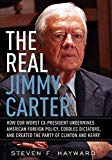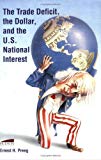Buyback Bubble Pops! The Long Ways Down …
by John Schroy filed under Capital Flow Analysis, Equities, Corporate Managers, Individual Investors, Leadership, Fund Managers, Equity Risk
It is always somewhat foolish to attempt to call the top of a bull market or the precise moment when a speculative bubble pops, but sometimes its better to be foolish than sorry.
During the ides of July 2007, when the Dow Jones Industrial Average was gently massaging 14,000, signs appeared that air was finally beginning to leak out of the Great Buyback Bubble that has long characterized the US equity market.
The headlines were about a liquidity crunch, sub-prime lending, and banking risk, but the buyback band kept on playing, as if these events were in some parallel universe and that Mr. Increased Earnings Per Share, Ms. High Employment, and General Good Times were in charge and would keep equities moving up, no matter what.
However, from the point of view of flow of funds analysis, the ides of July 2007 brought bad news indeed for the equity market.
Why the July 2006 Credit Crunch Bodes Ill for Equities
The forces driving the market upwards have been more than evident for some time:
Corporations have been aggressively forcing stock prices upwards by spending trillions in earnings, depreciation reserves, and borrowed funds on equity buybacks. Their motives have been simple and clear: companies need to win the approval of fund managers who control executive remuneration and bonuses and who are only interested in one thing: short-term stock price appreciation. The only way to guarantee that fund managers will be happy is to use buybacks to manipulate prices upwards.
Individual shareholders have been vigorously selling holdings of equities, mainly to cash in executive stock options while prices are still high. For over a generation, individual direct sales of equities have exceeded purchases by a wide margin (now more than one trillion dollars every year and a half).
Mutual fund holders, mostly ignorant of how markets really work, have continued to invest merrily in equities, hypnotized by SEC-approved Total Return figures (inflated by unrealized capital gains driven by massive buyback programs) and mutual fund marketing ballyhoo, unaware that buyback money is not going to them, the real owners of corporate America, but to executives, fund managers, and speculators.
The excess of buybacks over new issues now surpasses one trillion dollars every eighteen months — an astounding figure crushing all past records.
A Massive Ponzi Scheme
The dirty little secret about buybacks is that they are the essential element in a massive Ponzi scheme that favors corporate executives and fund managers.
As stock prices rise, it takes ever more money to drive prices even higher. When prices rise faster than the long-term rate of increase of corporate earnings per share (only about 5.1%), it gets harder and harder for companies to keep prices going up.
To raise money for buybacks, dividends must be cut, earnings depleted, depreciation and maintenance reserves forgotten, and “investing for the future” thrown aside. Even so, sooner or later the money simply runs out, the band stops playing, and equity prices fall.
For over a year, a large portion of buyback money has come from bank financing — a really stupid way for bank credit officers to apply depositor’s money.
The Liquidity Crunch
The significance of July 2007 to the Buyback Bubble was the sharp and sudden decrease in worldwide financial liquidity — which doesn’t mean that money disappeared — only that credit officers and investors suddenly began to come to their senses and realize the error of their ways.
After all, lending money to people without a job to buy real estate with no down payment at inflated prices is a far cry from rational lending practices.
Now bank credit officers are like any other pack of animals — they run the same way at the same time and are easily spooked. At the current extreme rate of buybacks, so dependent upon borrowing, any cut in buyback financing or glimmer of rational lending practices is really bad news for the equity market.
So the liquidity panic of July 2007 with its probable lingering consequences on credit policy, is the main reason to say that the Buyback Bubble has popped — perhaps not explosively, but decisively pricked nevertheless.
As companies find it more difficult to finance buybacks, executive option holders will be highly motivated to cash in their unrealized profits, as fast as possible, while there is still time. The volume of options held is so great, that any increase in selling will easily drive stock prices lower. As prices fall, more executives will have incentives to exercise options.
Joining them in the rush for the exit will be hedge fund managers, who have been going along for the ride and will note the end of the buyback bubble well before the unsophisticated masses holding mutual funds.
Finally, as prices fall far enough, mutual fund total return figures will become ever less attractive. Baby boomers approaching retirement will awake to the fact that you can’t live high on the meager dividends equities now pay; the rush to fixed income will begin. This will accelerate as interest rates rise.
Waiting for Hillary
While this rather glum background music is playing, we have to pass through the highly toxic atmosphere of US presidential politics.
Unless some miracle happens, it now looks like the next US president will be Mrs. Hillary Clinton, reigning with control of both houses of Congress.
Judging from what Mrs. Clinton has already promised her constituencies, here is what it would be reasonable to expect from her administration:
An increase in protectionist measures: This would tend to reduce the trade deficit, cutting the principal supply of easy money to US borrowers, sending up interest rates. The reduction in cheap imports from China and elsewhere will also drive up prices, tricking the Federal Reserve into raising interest rates to “fight inflation”. Higher interest rates will remove cheap financing for buybacks and drive stock prices down.
An increase in income taxes: Massive increased coverage for public health care, along with the need to repay campaign promises with increased government spending, will mean higher taxes and less money for consumers. This means lower corporate profits and less money for buybacks.
So, even if we lay aside the consequences of losing the War on Terror (seemingly, an almost certain consequence of a Clinton victory), there seems to be little reason to be optimistic about the outlook for the stock market.
Think 1973. Think Jimmy Carter!





